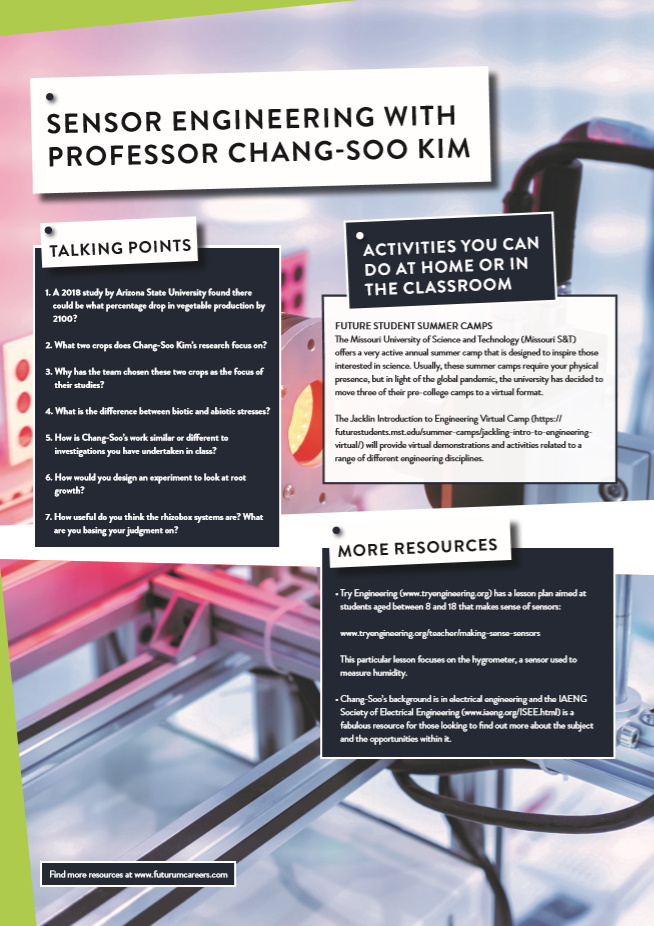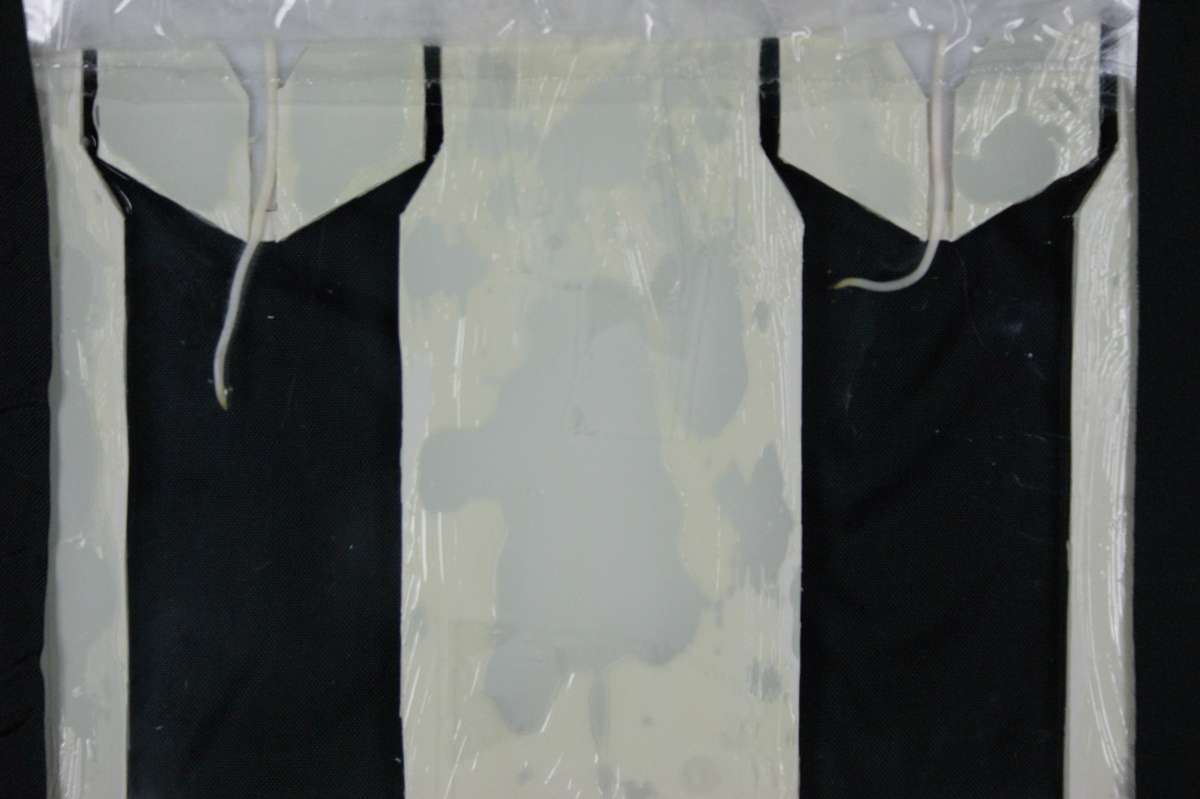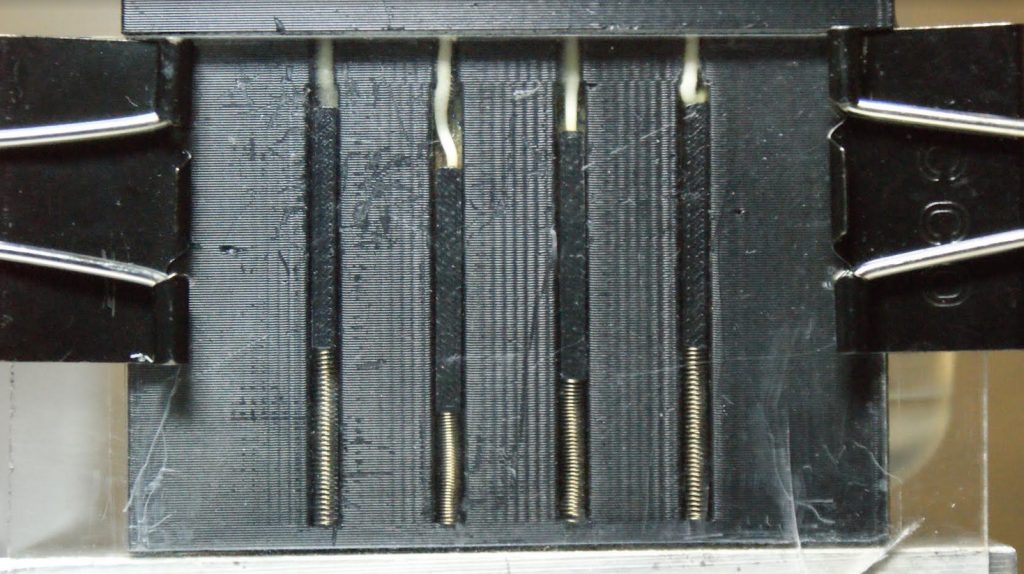Sensor engineering gets to the root of problems with food production
Professor Chang-Soo Kim leads a team based at the Missouri University of Science and Technology in the US. Their research is concerned with rhizobox systems, which aim to analyse factors affecting root growth. The findings will improve crop security and sustainability
There is a wealth of evidence supporting the idea that global warming and the associated environmental changes will affect food production. A 2018 study by researchers at Arizona State University found that greenhouse gas emissions could cause a 35% drop in vegetable production by 2100. Such a fall, especially when coupled with a significantly higher global population by the end of the century, would be disastrous and lead to widespread disruption of food supplies.
With that in mind, scientists around the world are working on ways to mitigate the effects of global warming – but success requires approaching the issues from a range of perspectives. For instance, there will be those who focus on finding ways to reduce carbon emissions, while others investigate improving methods of food production. Professor Chang-Soo Kim falls into this latter camp; he leads a team based at the Missouri University of Science and Technology (Missouri S&T) in the US which is working on ways to combat the abiotic stresses that affect root growth.
The focus of their investigations is corn and soybeans – two of the most common crops consumed around the world. Corn is the most important cereal crop on the planet, producing food for humans, livestock feed and biofuel, while soybeans are the most common protein-rich dietary ingredient and are also used for the manufacture of industrial products such as plastic, ink and biodiesel.
WHAT ARE THE ABIOTIC STRESSES THAT AFFECT ROOT GROWTH?
The term abiotic should be thought of in opposition to biotic stresses – which are those impacts that occur naturally, such as fungi, bacteria and viruses. In contrast, abiotic stresses are those non-biological factors that have a negative influence on life forms. “Forms of abiotic stresses include mechanical restrictions, excess water, water shortages, variations in temperature and chemical changes in the surrounding environment,” explains Chang-Soo. “Abiotic stresses are an ever-increasing critical issue because of global warming and associated environmental changes, which will eventually affect various aspects of biodiversity.”
To improve crop yields, healthy root growth in soils is crucial. Despite this, the interactions between plant roots and the surrounding environment are still relatively poorly understood. It is vital that researchers find ways of understanding the response of roots to different soils and the associated abiotic stresses, to put protective measures in place.
WHAT METHODS IS THE TEAM USING IN ITS INVESTIGATIONS?
Chang-Soo and his team have developed a special plant root growth and monitoring platform known as a rhizobox, which literally means ‘root container’. Rhizoboxes enable the researchers to study roots in rooting media, i.e. materials used to grow seeds or cuttings such as water (hydroponic growth) and air (aeroponic growth), and come in the form of 3D-printed transparent, cylindrical pots and rectangular plastic slabs of various sizes. By using these rhizoboxes, the scientists can study important aspects of seedling roots shortly after the seeds have germinated.
HOW DO THE RHIZOBOXES WORK?
The team has developed two rhizoboxes, each with a different function. The hydrotropism rhizobox enables the researchers to study how effectively roots sense water and move toward it to survive. “We place a variety of sensory mechanisms on the root tip to gain insight into the behaviour of roots,” says Chang-Soo. “A flat Y-shaped fluidic chamber has two gas inlets on both sides for introducing two air flows with different humidity levels. The root tip heads towards where the water is available, ensuring the root grows towards sources of water.”
The other rhizobox is called a penetrometric rhizobox and helps the team see how strong the root’s penetrating force is when it grows. Again, to survive, roots must be able to penetrate the soil to move to water sources. The penetrometric rhizobox system is composed of several seed chambers and root guiding channels. A growing seedling root within each channel pushes down a plunger, which is supported by small mechanical springs. “Each channel can be filled with humid air or completely submerged in water,” explains Chang-Soo. “The root grows until its maximum force is reached and cannot exceed the spring force anymore.” The team can then calculate the maximum root force by measuring the distance that the plunger has moved down.
Reference
https://doi.org/10.33424/FUTURUM64
This hydrotropism rhizobox shows how the root finds water to survive (overall size: about 2×3 square inches). The root tip bends toward the left side inlet where humid air is supplied (right chamber). The root grows downwards when there is no humidity gradient (left chamber).
This penetrometric rhizobox measures seedling root force (overall size: about 2×3 square inches). The root force can be calculated by how much the plunger and the spring are pushed down by the growing roots.
There is a wealth of evidence supporting the idea that global warming and the associated environmental changes will affect food production. A 2018 study by researchers at Arizona State University found that greenhouse gas emissions could cause a 35% drop in vegetable production by 2100. Such a fall, especially when coupled with a significantly higher global population by the end of the century, would be disastrous and lead to widespread disruption of food supplies.
With that in mind, scientists around the world are working on ways to mitigate the effects of global warming – but success requires approaching the issues from a range of perspectives. For instance, there will be those who focus on finding ways to reduce carbon emissions, while others investigate improving methods of food production. Professor Chang-Soo Kim falls into this latter camp; he leads a team based at the Missouri University of Science and Technology (Missouri S&T) in the US which is working on ways to combat the abiotic stresses that affect root growth.
The focus of their investigations is corn and soybeans – two of the most common crops consumed around the world. Corn is the most important cereal crop on the planet, producing food for humans, livestock feed and biofuel, while soybeans are the most common protein-rich dietary ingredient and are also used for the manufacture of industrial products such as plastic, ink and biodiesel.
WHAT ARE THE ABIOTIC STRESSES THAT AFFECT ROOT GROWTH?
The term abiotic should be thought of in opposition to biotic stresses – which are those impacts that occur naturally, such as fungi, bacteria and viruses. In contrast, abiotic stresses are those non-biological factors that have a negative influence on life forms. “Forms of abiotic stresses include mechanical restrictions, excess water, water shortages, variations in temperature and chemical changes in the surrounding environment,” explains Chang-Soo. “Abiotic stresses are an ever-increasing critical issue because of global warming and associated environmental changes, which will eventually affect various aspects of biodiversity.”
To improve crop yields, healthy root growth in soils is crucial. Despite this, the interactions between plant roots and the surrounding environment are still relatively poorly understood. It is vital that researchers find ways of understanding the response of roots to different soils and the associated abiotic stresses, to put protective measures in place.
WHAT METHODS IS THE TEAM USING IN ITS INVESTIGATIONS?
Chang-Soo and his team have developed a special plant root growth and monitoring platform known as a rhizobox, which literally means ‘root container’. Rhizoboxes enable the researchers to study roots in rooting media, i.e. materials used to grow seeds or cuttings such as water (hydroponic growth) and air (aeroponic growth), and come in the form of 3D-printed transparent, cylindrical pots and rectangular plastic slabs of various sizes. By using these rhizoboxes, the scientists can study important aspects of seedling roots shortly after the seeds have germinated.
HOW DO THE RHIZOBOXES WORK?
The team has developed two rhizoboxes, each with a different function. The hydrotropism rhizobox enables the researchers to study how effectively roots sense water and move toward it to survive. “We place a variety of sensory mechanisms on the root tip to gain insight into the behaviour of roots,” says Chang-Soo. “A flat Y-shaped fluidic chamber has two gas inlets on both sides for introducing two air flows with different humidity levels. The root tip heads towards where the water is available, ensuring the root grows towards sources of water.”
The other rhizobox is called a penetrometric rhizobox and helps the team see how strong the root’s penetrating force is when it grows. Again, to survive, roots must be able to penetrate the soil to move to water sources. The penetrometric rhizobox system is composed of several seed chambers and root guiding channels. A growing seedling root within each channel pushes down a plunger, which is supported by small mechanical springs. “Each channel can be filled with humid air or completely submerged in water,” explains Chang-Soo. “The root grows until its maximum force is reached and cannot exceed the spring force anymore.” The team can then calculate the maximum root force by measuring the distance that the plunger has moved down.
WHAT ARE THE NEXT STEPS FOR THIS RESEARCH?
One of the most important factors of Chang- Soo’s research is the fact that it provides two convenient, analytical techniques to study plant roots. The two rhizoboxes enable the researchers to study mechanical and water stresses that work in tandem, because a lack of water inevitably compacts the soil and makes it harder for the root to penetrate it. With that in mind, Chang-Soo and his team will continue to develop new techniques and technologies that can provide other means of understanding how one stress (mechanical or water) affects the other and to what extent. “We plan to combine other abiotic stress factors such as salt levels, nutrients and temperature to mimic conditions that are closer to real-world situations,” says Chang-Soo. “We believe our efforts will enable us to identify crop varieties that are stress-tolerant, and are therefore more suitable to counter the effects of climate change and secure food supplies in the future.”
 PROFESSOR CHANG-SOO KIM
PROFESSOR CHANG-SOO KIM
Electrical and Computer Engineering
Missouri University of Science and Technology (Missouri S&T), USA
FIELD OF RESEARCH: Electrical and Computer Engineering
RESEARCH : Chang-Soo’s work is concerned with demonstrating the effectiveness of rhizoboxes to analyse the responses of seedling corn roots to a range of abiotic stresses. The outcomes of this research aim to help growers deal with the effects of climate change and its impacts on food productivity.
FUNDERS: US Department of Agriculture, National Science Foundation

PROFESSOR CHANG-SOO KIM
Electrical and Computer Engineering
Missouri University of Science and Technology (Missouri S&T), USA
FIELD OF RESEARCH: Electrical and Computer Engineering
RESEARCH : Chang-Soo’s work is concerned with demonstrating the effectiveness of rhizoboxes to analyse the responses of seedling corn roots to a range of abiotic stresses. The outcomes of this research aim to help growers deal with the effects of climate change and its impacts on food productivity.
FUNDERS: US Department of Agriculture, National Science Foundation
MEET THE TEAM
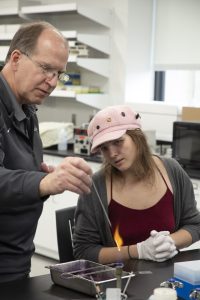 DAVID WESTENBERG
DAVID WESTENBERG
PROFESSOR OF BIOLOGICAL SCIENCE
“I earned my PhD in microbiology and molecular genetics from UCLA and co-directed the Missouri S&T Science Education and Quantitative Literacy programme for school teachers. I am an HHMI Bionteractive Teacher Ambassador, an American Society for Microbiology Biology Scholar and the recipient of the ASM Carski award for undergraduate education. Most importantly, I am so happy to co-advise Helix, the Missouri S&T ASM Student Chapter, and the Missouri S&T IGEM, synthetic biology student design team.”
 EMILY BEAHM
EMILY BEAHM
JUNIOR OF BIOLOGICAL SCIENCE
“I’m working towards pursuing a career in conservation and have plans to obtain a master’s degree in the coming years.”
 CAROLINE DYKES
CAROLINE DYKES
SENIOR OF BIOLOGICAL SCIENCE, MINOR IN CHEMISTRY AND PSYCHOLOGY
“When I was younger, I wanted to be a veterinarian. I now aspire to be a surgeon! I have a passion to help all living beings and my community.”
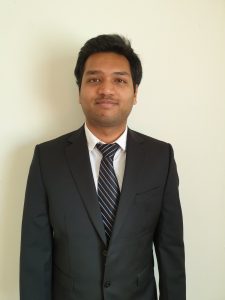 MONISH KANKANALA
MONISH KANKANALA
MASTER OF COMPUTER ENGINEERING
“I am a master’s student with knowledge in automation and embedded systems. I am happy to be able to contribute to this exciting interdisciplinary project on rhizoboxes.”
ABOUT SENSOR ENGINEERING
Sensor engineering is a broad term that describes an area of scientific enquiry focused on researching and developing sensors to explore new physical, chemical and biological applications. A sensor – typically called a probe, transducer, or detector – is a device that measures changes within physical, chemical and biological parameters in its environment and generates a signal. Some examples of physical parameters are temperature, light and force – one example everyone will be familiar with is a thermometer, which is an instrument consisting of a temperature sensor. Examples of chemical sensors include those that measure pH levels, humidity and carbon monoxide levels, while biological sensors monitor glucose levels (for instance, in diabetic patients), microbial contamination and blood pressure.
WHAT KEY SKILLS ARE NEEDED TO DESIGN AND CREATE A SYSTEM SUCH AS THE RHIZOBOX?
Chang-Soo believes that the most important aptitudes in sensor engineering are motivation and reasoning. If you can work on understanding the problems associated with your chosen area of enquiry, you can use scientific reasoning to calculate how best to approach the problem. The researchers knew they needed to be able to measure the seedling root force. This led to the design of a mechanical spring, which the root pushes against. Working this out required motivation to understand the problem and reasoning to develop a solution.
ARE THERE MANY OPPORTUNITIES IN THE FIELD OF SENSOR ENGINEERING?
Yes, absolutely! R&D (research and development) in sensor engineering is one of the bottlenecks in advancing associated technologies, including those in fields as varied as agriculture, environment, medicine, big data and communication. “You would be very surprised by how many sensors surround us in our daily lives,” says Chang-Soo. “In fact, even the human body is full of sensors and sensory organs – the eyes, nose, ears, tongue and skin for instance. These sensors are so important to our functioning and the same applies to those used in modern society – we need experts to advance sensor technology to address societal needs.”
WHAT WILL BE THE NEXT BIG THING IN SENSOR ENGINEERING?
Chang-Soo thinks that three important areas will be the focus of sensor engineering of the future: agriculture, the environment and medicine. “The good news is that the challenges coming from all these areas overlap a lot and share many common issues. It seems apparent that the crop yield loss is related largely to climate change and associated drought, nutrient deficiency and contaminated soil,” explains Chang-Soo. “Moving into marginal producing areas causes an expansion of farming area into less productive land without technical improvements, while causing serious environmental degradation.”
HOW TO BECOME A SENSOR ENGINEER
• Sensor Marketing provides a comprehensive list of areas that use sensor engineering and associated technologies. This should give you an idea of the wealth of opportunities out there for a sensor engineer and help you start to think about where you might want to focus your energies in the future: http://www.sensormarketing.com/resources/sample-page/
• Sensor City is a global hub for the development of sensor and Internet of Things technologies. It is a wonderful resource for those wishing to find out more about what is currently happening in the field of sensor engineering: www.sensorcity.co.uk
• Sensor engineers can earn anywhere between $58,500 and $178,500 per year, depending on their level of experience.
Chang-Soo is keen to emphasise the need to take fundamental science subjects such as physics, chemistry and biology, as early as you can in your education. It is critically important in school and college.
From there, you might wish to focus on specific engineering majors and masters at university, such as electrical, mechanical, chemical or biomedical engineering – it really depends on which branch of engineering appeals to you the most.
“By its nature, sensor engineering is interdisciplinary and transdisciplinary,” explains Chang-Soo. “Even now, my team needs significant contributions from mathematicians, statisticians and computer scientists.” The point here is that there is no single pathway to sensor engineering, so think about what it is that interests you most about the field and then adapt your pathway to suit.
HOW DID PROFESSOR CHANG-SOO KIM BECOME A SENSOR ENGINEER?
WHAT DID YOU WANT TO BE WHEN YOU WERE YOUNGER?
When I was a kid, I loved reading science fiction. I spent hours talking with friends about robots and superheroes – I wanted to be a cartoonist. As a teenager, I became fascinated with the works of Nam June Paik, who is one of the founders of video art. I guess you could say I was more of a liberal arts-type person back then, but I have always held serious technical interests.
YOU HAVE A DEGREE IN ELECTRONIC AND ELECTRICAL ENGINEERING. WHO OR WHAT INSPIRED YOU TO STUDY THIS SUBJECT?
The honest truth is I can’t remember – it was so long ago! It may well have been a combination of my passion for technology and some teen rebellion against my father who was an English literature professor. I decided to become an engineer and the fact I became an engineering professor as opposed to an industrial engineer is likely related to my family being academics.
HOW DID YOUR STUDIES IN ELECTRONIC AND ELECTRICAL ENGINEERING AT KYUNGPOOK NATIONAL UNIVERSITY IN SOUTH KOREA EVOLVE INTO SENSOR ENGINEERING?
The university I attended when studying my BSc through to my PhD is one of the major research universities in South Korea that specialises in electronic and electrical engineering. Most of my classmates at university are now working at electronics and automobile companies like Samsung, LG, Hyundai and KIA. I was always looking for unique and exciting opportunities away from the traditional pathways, and I know I made the correct choice to work in the area of biological sensors.
IF YOU COULD START AGAIN IN YOUR CAREER, WHAT WOULD YOU DO DIFFERENTLY?
Perhaps I would bring more aspects of liberal arts and humanities into my engineering work. I do wonder whether advances in technology that do not consider topics such as morality and ethics might cause problems in the future.
CHANG-SOO’S TOP TIPS
1 You are fortunate if you are naturally passionate motivated by curiosity to find out things you do not know – so harness that and keep going until you find the solution.
2 Where possible, think outside the box. This has now become an old adage about creativity, but it is highly relevant in sensor engineering: engineers need to think about answering the question of ‘How?’ and this often necessitates original approaches to the problem.
3 Mathematical and analytical skills will stand you in good stead for a career in engineering. The sooner you can start to hone these skills the better – they will greatly help you achieve the results you are looking for, so go for it!


